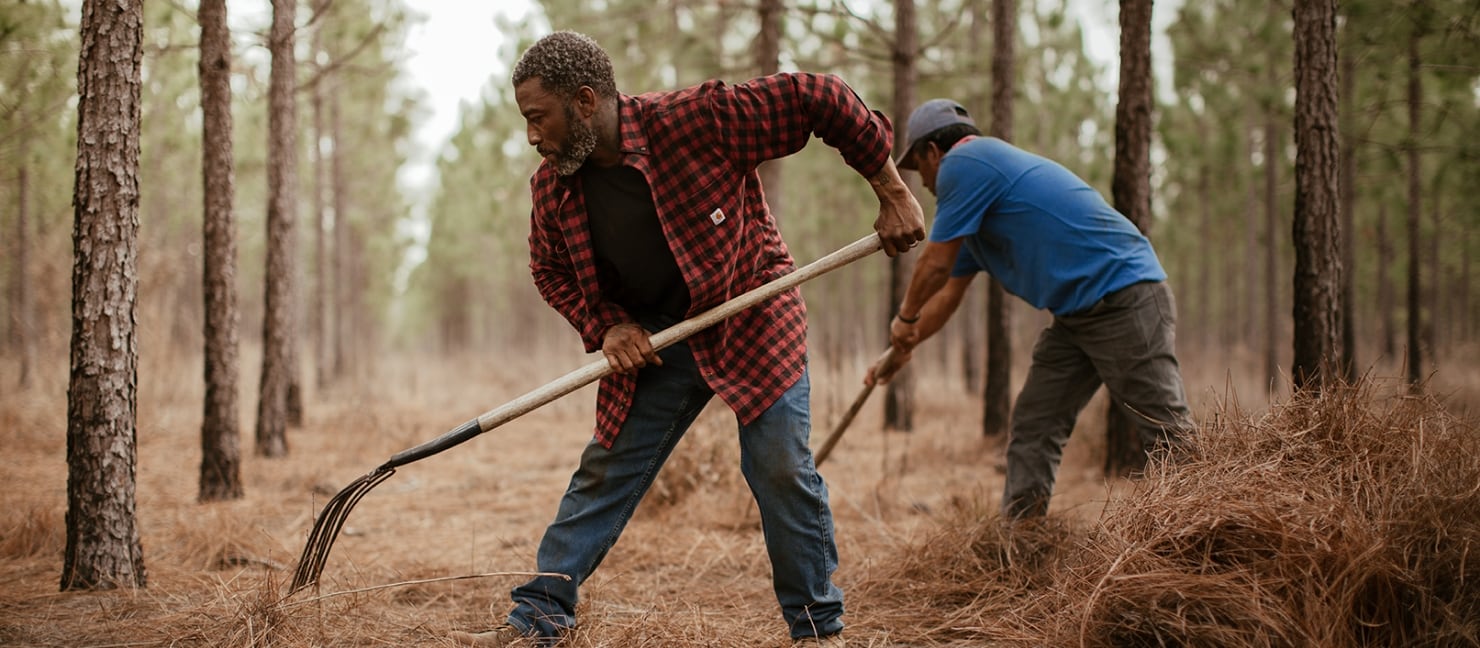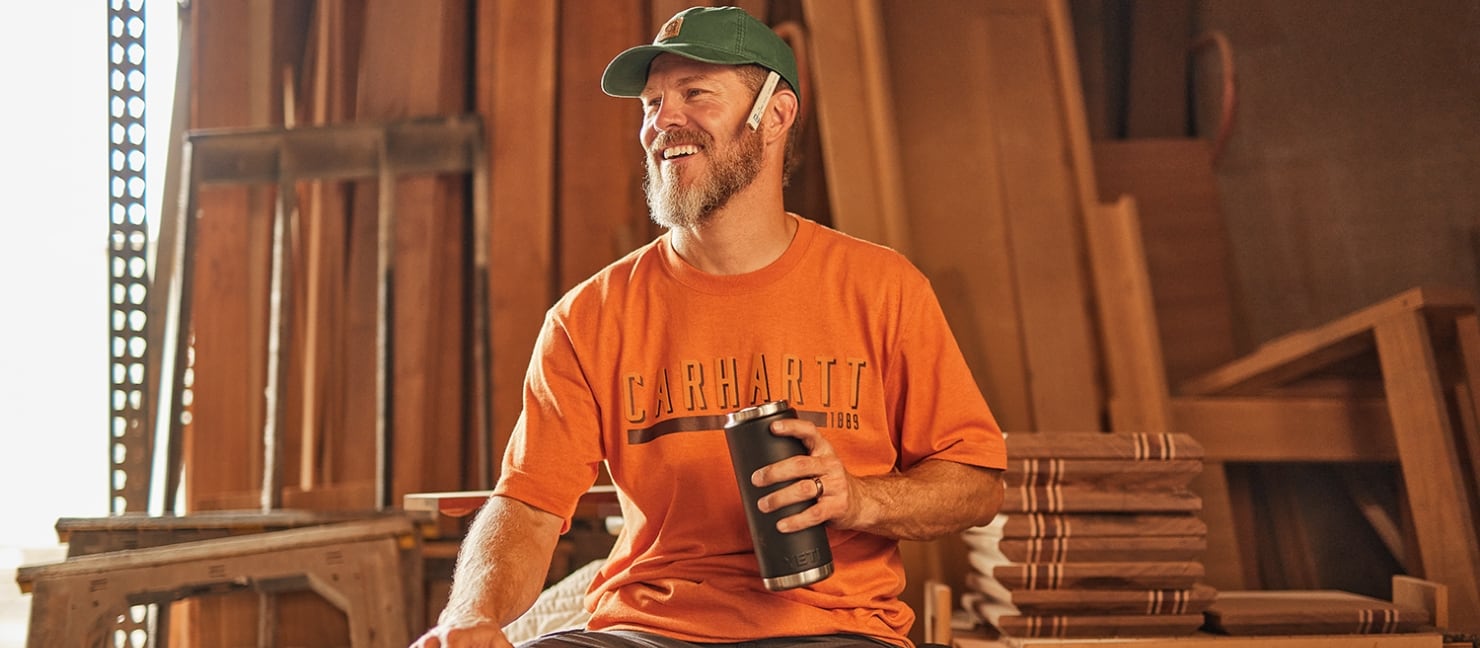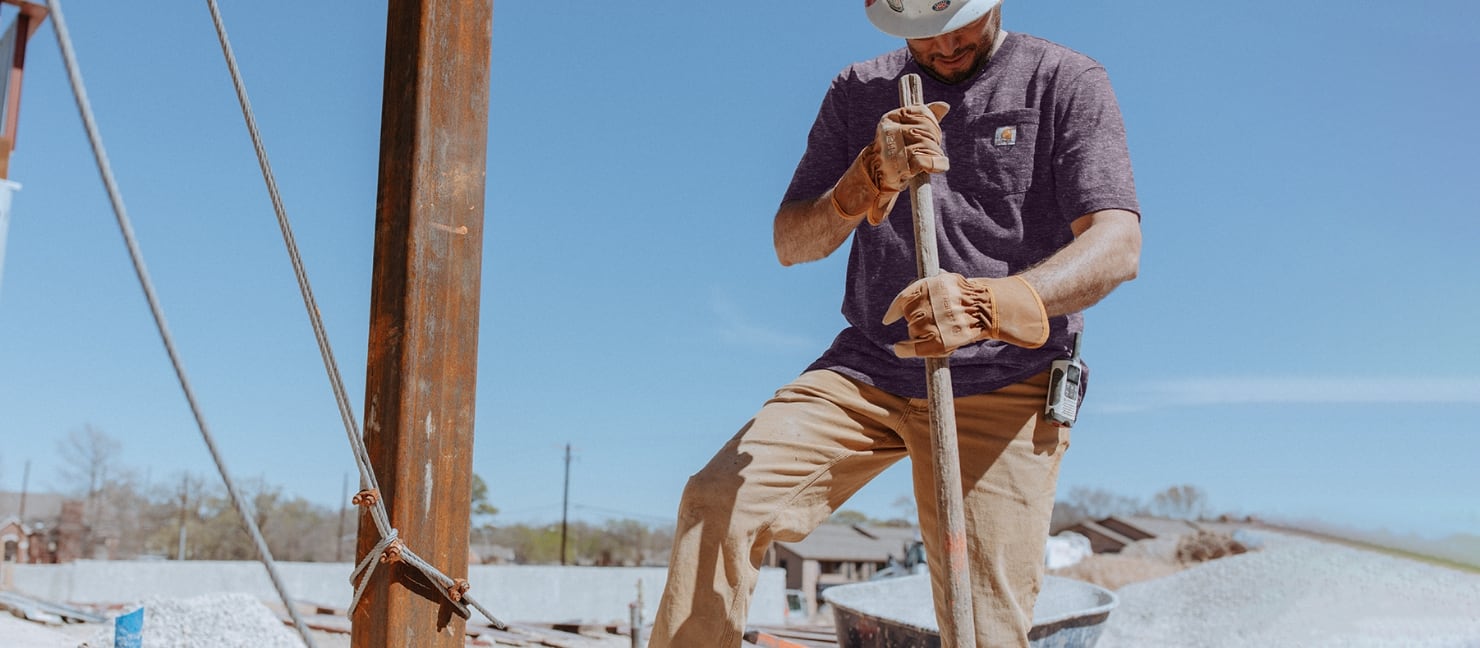11 Tips for Staying Cool While Working in the Heat

Some jobs stop for nothing – especially not for a little heat. But what happens when that little heat turns into an all-day high paired with overwhelming humidity? It's no secret that working in the heat and against prolonged sun exposure, hot work environments can be extremely dangerous!
No matter what view your 'office' has — a construction site, a ranch/farm, or even a factory, you can't work your best outdoors with symptoms that lead to heat cramps, stress, or worse: strokes. In this guide, you'll learn all about how to stay cool in the heat while working outside.
11 Tips for Staying Cool While Working in the Heat
0. Know Heat Exhaustion or Stroke Signs & Symptoms
Heat-related illnesses (e.g. heat stroke & heat exhaustion) often have easily dismissed signs and symptoms. Despite how alarming these illnesses can be when they happen, both are preventable with the right precautions and considerations.
There's no job site without safety. A team that knows the signs and symptoms ahead of time is a well-prepared one. Encourage your colleagues or employees to take the following heat-related illness symptoms identified by the CDC seriously as they occur:
Common Heat Exhaustion Symptoms
Dizziness
Fainting
Headache
Heavy sweating
Muscle cramps
Nausea or vomiting
Paleness
Tiredness
Weakness
Common Heat Stroke Symptoms
Confusion
Dizziness
Extremely high body temperature
Nausea
Rapid, strong pulse
Red, hot, and dry skin (no sweating)
Throbbing headache
Unconsciousness
1. Stay Hydrated

Drinking small amounts of water about every 15 minutes can help you stay cool and avoid heat exhaustion. Academy Sports + Outdoors offers a wide selection of hydration packs to help with maintaining hydration. Feeling thirsty? Pick up some bottled water and sports drinks for when you need hydration throughout the day.Energy drinks with 6 to 8% carbohydrates provide similar amounts of salt and sugar that our blood and body need to continue doing its job effectively and efficiently. If you want to increase the nutrition factor of your drinks, reach for electrolyte tablets to mix into your bottled water or water bottles from home.
2. Protect your Skin from Harmful UV Rays
Wear loose-fitting clothing and light colors with moisture-wicking, water-resistant capabilities. Ventilation and UPF sun protection are ideal for keeping your skin safe as you take on hot days at the job site.Clothing items such as wide-brimmed hats, sunglasses, breathable, long pants, or sun protection shirts, like the new Carhartt Men’s Force Relaxed Short Sleeve T-shirt are not only stylish and durable but ready to keep you cool once your workload heats up.
3. Avoid Caffeine and Alcoholic Beverages
Drinks with caffeine, such as coffee or soda and alcoholic beverages are not ideal for hydration purposes. Often these drink types have the opposite effect and tend to promote dehydration.
4. Eat Light, Chilled Foods
Try not to reach for soups, teas or heavy meat and cooked meals when it is hot outside. Instead, opt for lighter summer fare and frequent snacks consisting of cold fruits and vegetables or low-fat dairy products.
5. Take A Break

The workday requires your efforts in to get things done and sometimes we’re too hard ourselves for slowing down or taking breaks from the grind. However, the fact remains that taking breaks from the heat is important for operational safety and success.Academy’s large assortment of easy set-up canopies provide much-needed shade and rest so that you not only get the job done, but that you get it done safely as well.
6. Use Sunscreen
To keep UV rays from harming your skin you should make sure to always keep sunscreen on hand. Look for ones that are SPF 30-rated or higher. The aforementioned clothing with UPF blockers is also ideal for wear to keep your skin protected from sunburn after prolonged sun exposure.
7. Chill Your Personal Items
Using cold packs, ice packs, cooling towels, or chilled rags can have a rapid cooling effect to help regulate your body temperature and reduce stress from the blistering heat.
8. Carry Portable Cooling Devices
Bringing fans and cooling devices (if permitted and safe to do so) to the job site are also great ways to keep yourself and others safe. It’s also recommended to bring along spray bottles that you can store in portable coolers for yourself or for co-workers to use in case of an emergency.
9. Get Acclimated
In extremely hot weather conditions, do not immediately go full throttle. Start off slow, pace yourself and when you seem to have reached a nice rhythm check in with yourself from time to time to make sure that you still feel reasonably comfortable and safe. Overexerting in the heat can lead to dangerous – and potentially life-threatening – situations.
10. Have an Emergency Action Plan

In the event you or someone you work with is unable to prevent heat-related illness on the job, always have a safe and effective emergency plan ready to go. Alternatively, work with supervisors and leadership to plan an effective one.
People experiencing heat-related illness symptoms may dismiss them. Take proactive measures to protect yourself and others when these symptoms first appear. Your team should prioritize prevention to keep everyone safe at the job site.
Encourage those at higher risk for these heat-related illnesses and their symptoms to take extra care while working outside in the heat. Higher-risk individuals include people 65 years of age or older, anyone diagnosed with heart disease or high blood pressure, people who carry more weight, and those who take medications.
| Sample Heat-Related Illness Emergency Action Plan | ||
|---|---|---|
| Steps | Details | Actions |
| 1. Recognize Symptoms | Signs of heat-related illnesses | Train all employees to identify symptoms promptly. |
| 2. Call for Help | Dial emergency services (911) or local EMS. | Inform the dispatcher of the situation and location. Notify supervisors or managers. Clearly communicate the urgency of the situation. |
| 3. Move to Shade | Move the affected person to a shaded area. | Ensure quick relocation to a cooler environment. Lay the person down. Encourage rest to prevent further heat stress. |
| 4. Hydrate | Offer water to the person. | Encourage sips of water to avoid dehydration. Avoid beverages with caffeine or alcohol. Promote rehydration with electrolyte solutions if available. |
| 5. Cool the Person | Use cold packs or wet towels on pulse points. | Assist in cooling the person without overcooling. Use fans or create airflow if possible. Prioritize cooling measures while awaiting medical help. |
| 6. Monitor Vital Signs | Check the person's vital signs (pulse, breathing). | Communicate vital sign information to emergency responders. Stay with the person and provide reassurance. Monitor for changes in condition until help arrives. |
| 7. Evacuate if Necessary | If their condition doesn't improve or worsens, evacuate the person. | Follow the established evacuation plan. Follow emergency response roles if designated. Assign roles for guiding and assisting evacuees. |
| 8. First Aid | Administer basic first aid if trained. | Apply first aid as necessary and within training limits. |
| 9. Document the Incident | Record details of the incident. | Document actions taken and share with supervisors. |
Heat Stress Symptoms
Prolonged heat exposure can lead to heat stress and similar heat-related illnesses that cause workers — in these harsh conditions — to suffer from several concerning symptoms, including (but certainly not limited to): confusion, headaches, cramps, nausea, dizziness, slurred speech, or worse.
Have Fun Out There!
Working outdoors or indoors in hot conditions doesn’t need to lead to feeling overwhelmed! Working in the heat can be safe and efficient when a person takes the proper steps to stay cool and hydrated while keeping a watchful eye out for heat stress warning signs. Find the best workwear clothing to beat the heat at Academy Sports + Outdoors – shop online and in-store.


